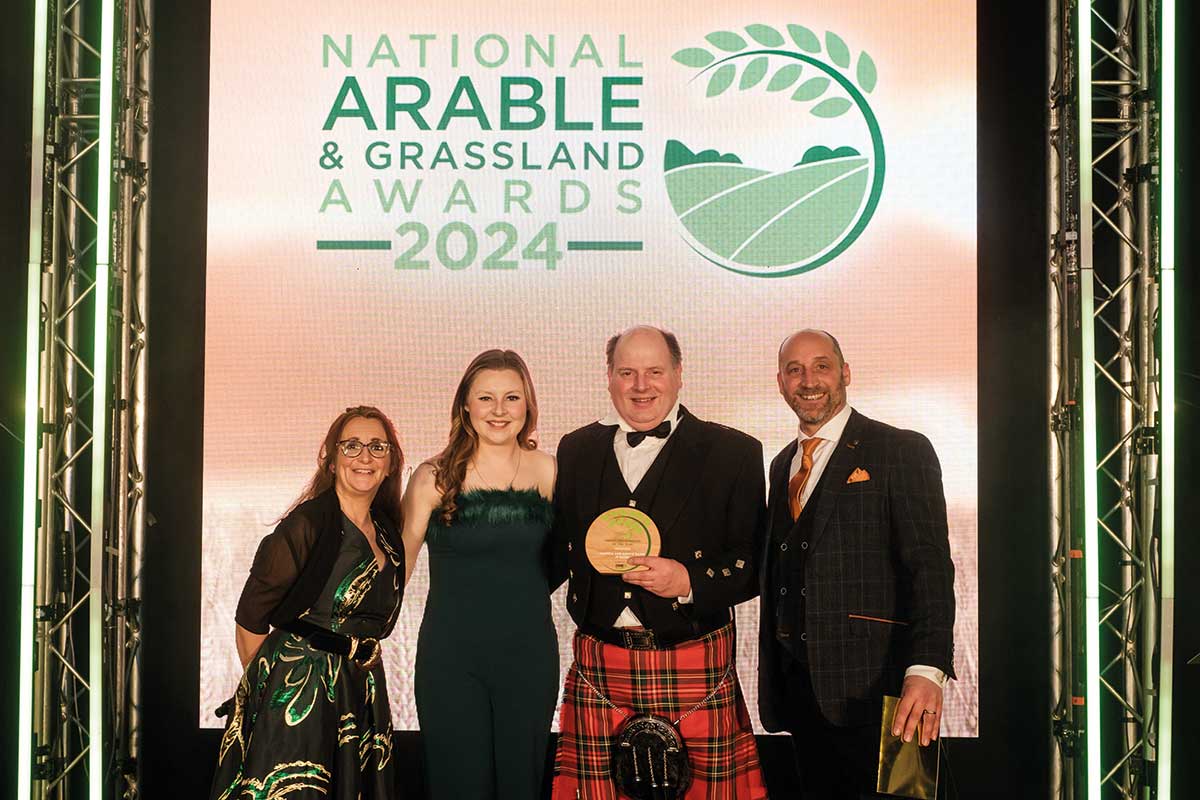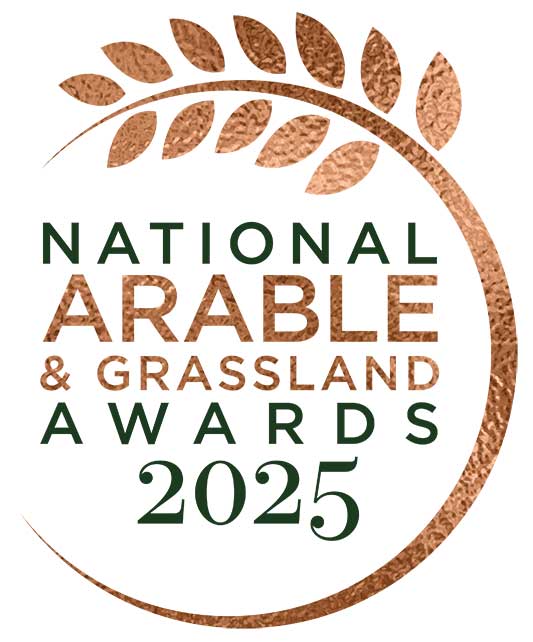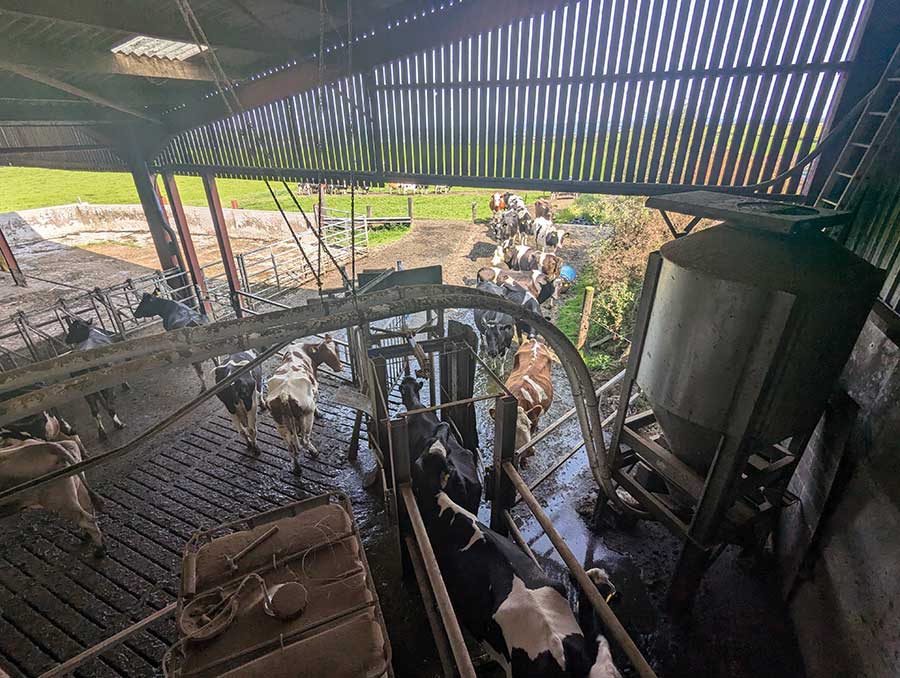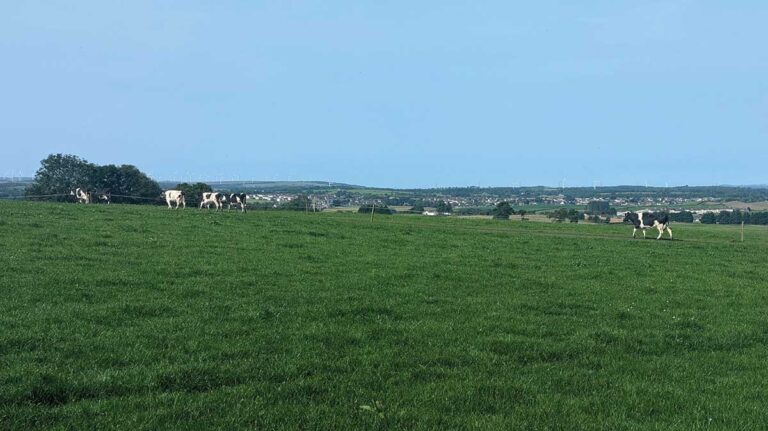Andrew and Marisa Baird run Auchnotroch Farm, near Carluke, Lanarkshire, with their daughter, Kirstie Morrison.
The farm sits at just over 100ha, with 200 milking Norwegian-crosses block-grazed between the first week of April and the end of October.
See also: Scottish estate puts Grange toolbar to work
“We fully implemented paddock grazing as it looked like a good way to increase production and the utilisation of grass and ensure that we always had the most nutrient-dense forage available for the herd,” Andrew explains.
At the time, they were milking in a side-by-side parlour, at which point the farm increased the milking herd from 120 wet cows to 180, with Andrew and Marisa working towards a closed system on the farm, handling artificial insemination and breeding all the replacements.
Seeing an opportunity to increase efficiency as the herd increased, Andrew and Marisa looked to robot milking.
“It would be fair to say that there was some scepticism about our decision at first,” Andrew says. “A lot of people couldn’t understand how we were going to make it work with the block-grazing.”
The installation of four Fullwood Merlin robots required a different mindset. The family had the machines fitted in a row, with pathways to the left and right of the shed.
The fields on the left were designated the A-blocks, while the ones on the right were named the B- blocks. As the cows exit the milking parlour, the gates automatically let them out to the opposite side.
This means that on one day the cows will alternate between paddocks in A-block, B-block and finish the day in A-block, while the next the pattern will go B, A and B.
Both say this system has significantly increased grass use on the farm. For the past two years, analysis as part of the GrassCheck GB has shown 100% use, with cattle grazing paddocks down from over 3,000kg of dry matter (DM)/ha to under 1,500kg DM/ha.
Marisa adds that they’ve also seen a reduction in mastitis throughout the herd, meaning that expenditure on veterinary treatments have reduced.

Looking after the (original) sward
One of the key advantages of the block grazing has been the reduction in sward damage in the paddocks. Andrew notes that even in the past 12 months, where torrential rain has made field operations difficult for farmers across all sectors, they only saw minimal amounts of damage in the field.
“There’s always fresh, lush grass available to the herd, so they’re not staying in one area and grazing it down to nothing,” he says. “If you go out to our fields, we have green grass growing all the way up to the gateway.”
When asked about reseeding the paddocks, Andrew and Marisa state that they don’t – at least not until a significant issue arises.
“We reseed a lot less often than many would recommend,” explains Andrew. “However, we believe that if you look after the plant, it will continue to flourish in the field.”

2025 National Arable and Grassland Awards
Read about all the nominees and buy tickets to the awards night online.
Grassland management
Much like allowing the cattle to come and go as they please creates a more natural environment for the herd, the Bairds take the same approach to grassland management.
“We look after the grass, but we also allow it to do what’s natural. When the grass is at the three-leaf stage it’s refuelling the roots, encouraging growth again, so we do everything we can to keep it at that point for as much of the year as possible.”
Management starts ahead of letting the cattle out to graze. Additional growth is pre-mown in the spring to stop grass going to stem.
Before the grazing season, a mix of on-farm slurry and digestate from a local anaerobic digester is applied, which helps to boost the potash and phosphates that the soil is naturally low in.
Applications continue on the silage ground after each cut until the slurry pit is empty, which allows the family to cut back on artificial fertiliser use.
On fields that cannot be used for grazing – the farm has a block of land with a road separating it – the grass is maintained in a similar way, with four cuts taken for silage to provide winter feed. This is mixed with caustic wheat and hay to be presented at the trough.
To boost the nutritional intake of the cattle and to encourage them into the milking robots, all other concentrate is fed during milking.
“One thing we like about the Fullwood robots is that the concentrate trough folds away after milking is complete,” Marisa explains.
“This is important because the cattle will try and game the system, going into the robots when they don’t need milking to try to access any leftover concentrate.”
She adds that there is a rule of three when it comes to moving the cattle to fully robotic milking. “We were told it’s three days, three weeks and three months. Three days of having to help the cattle to understand the process, three weeks before the last of the herd ‘get it’, and three months until the whole system is working smoothly.”

Looking to the future
The system has not only reduced the pressure on the family, but it has also secured the business financially. Since integrating robotic milking and paddock grazing, milk yields have grown from 6,500 litres a cow a year to about 8,000 litres.
This has recently been bolstered by First Milk’s regenerative premiums, and electricity produced by solar panels and an on-farm wind turbine.
“We’re pretty much at capacity at the moment, so we’re focused on getting the best return out of our current setup,” Andrew explains.
“The Fullwood robots recommend a 10% quiet period, but we’re currently running at just 5% when all the cows are freshly calved.”
This means that any expansion would not require just one thing, but additional ringfenced land, more robotic milkers and the infrastructure to make it work within the current system.
Andrew and Marisa also note that they’re looking to Kirstie and her husband, Alasdair Morrison, to guide the business in the future.
“Kirstie is incredibly passionate about the job,” Marisa explains. “There isn’t anything she doesn’t know about the cattle and the farm, and she’s keen to find ways to move the business forward.”
Alasdair runs a 121ha beef unit nearby and is also keen to develop both his family’s farm and work with Kirstie at Auchnotroch, leaving the high-yielding, low-input system in safe hands.


